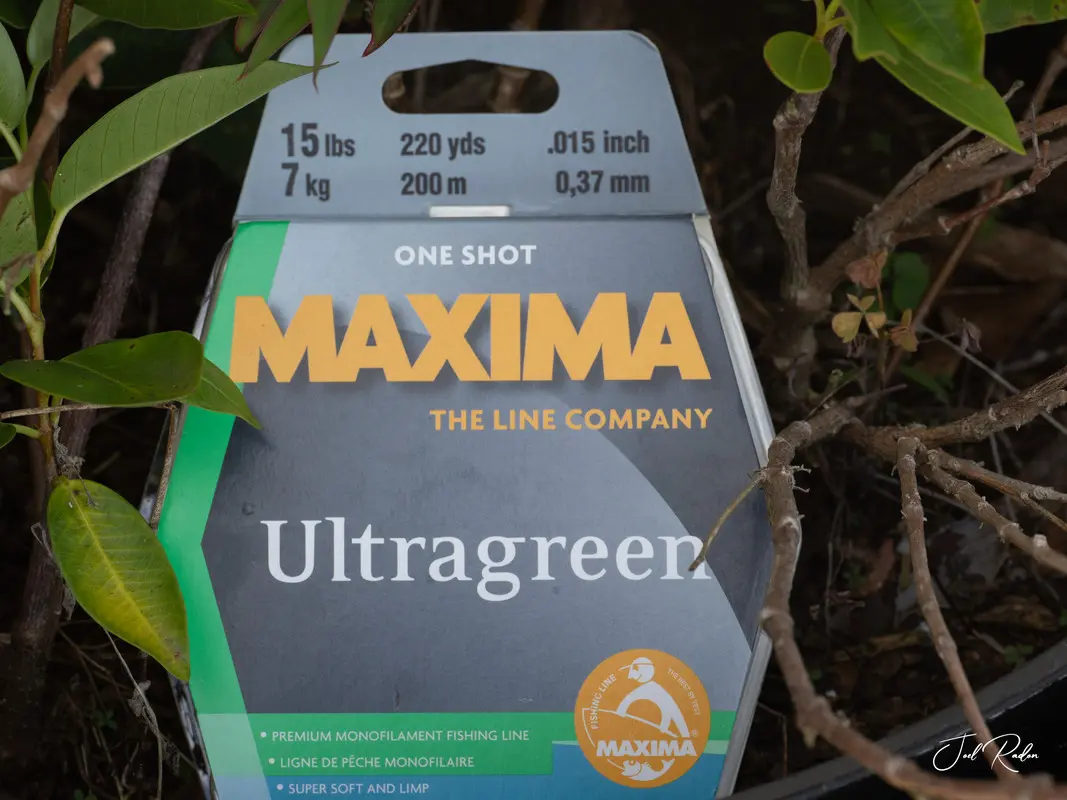Hot Takes: Leader - Mono vs. Fluoro

Mono vs. Fluorocarbon Leader: When It Matters and Why
Choosing the right leader material—monofilament vs fluorocarbon—can sometimes feel trivial, but in many fishing scenarios, it plays a critical role in your success on the water. Understanding when and why to use fluorocarbon or monofilament can help you make smarter choices and catch more fish.
🧵 When Leader Choice Doesn’t Matter
There are situations where your leader choice won’t make much of a difference. If you're fishing in murky water, targeting aggressive feeders, or using topwater lures, the visibility and subtle behavior differences between monofilament and fluorocarbon may not significantly impact your results.
But when conditions are more challenging, your leader can absolutely make or break your day.
🕵️♂️ When to Use Fluorocarbon Leader
Fluorocarbon offers several key advantages over monofilament:
1. Low Visibility in Clear Water
Fluorocarbon has a refractive index very close to that of water, making it significantly less visible to fish. This makes it ideal for:
- Clear water conditions
- Highly pressured areas
- Targeting spooky or cautious species
💡 If you’re sight fishing in 10–20 feet of crystal-clear water, especially for species like snook or redfish that get a lot of pressure, using fluorocarbon can increase your hookup rate.
2. Higher Abrasion Resistance
Fluorocarbon is more abrasion resistant than monofilament. This is particularly useful when:
- Fishing around structure like docks, mangroves, or oyster bars
- Targeting fish with rough mouths like snook or tarpon
💥 A snook rubbing your leader along barnacles or its own raspy mouth is much more likely to cut through monofilament than fluorocarbon.
3. Lower Stretch = Better Sensitivity
Fluorocarbon has less stretch than mono, which means:
- Better hook-setting power
- More sensitive feel for detecting subtle bites
- Improved lure control, especially in deeper water
4. Leader Sizing Tips
Choosing fluorocarbon is only part of the equation—you also need to size it properly for your target species and conditions.
Example:
For shallow-water snook or redfish in 10–20 feet of clear water:
- Use 20–40 lb fluorocarbon leader
- This offers the perfect balance of stealth and strength
If you're going lighter than 20 lb, you risk break-offs from abrasion or hard runs. Heavier than 40 lb may spook wary fish in clear water.
🧠 When to Use Monofilament Leader
While fluorocarbon has some technical advantages, monofilament still has its place, particularly for anglers who know how to use its characteristics to their advantage.
1. More Forgiving for Fighting Fish
Monofilament has more stretch, which acts like a shock absorber during the fight. For experienced anglers, this can actually offer more control when:
- Battling strong, fast-running fish
- Using light tackle
- Fishing from a kayak or paddleboard where you can’t always chase the fish
🎣 The stretch in mono gives you a buffer that helps prevent pulled hooks and reduces stress on knots.
2. Intuitive Tension Feedback
Many seasoned anglers appreciate the feel of monofilament under tension. It provides a subtle but perceptible “warning” as it approaches its breaking point:
- You can feel it tighten and stretch before it snaps
- It allows you to cup the spool or back off pressure at the right moment
- Offers a more natural control curve when managing drag manually
🧠 With experience, you’ll learn to sense that critical moment—just before mono gives way—giving you a tactical edge in tough fights.
3. Ideal for Topwater and Buoyant Presentations
Monofilament is less dense than fluorocarbon, so it tends to float or sink slowly. This makes it ideal for:
- Topwater lures
- Slow-falling soft plastics
- Live bait presentations in the upper column
🌊 If your leader sinks too fast, it can ruin the action of certain lures or create drag that feels unnatural to the fish.
4. Budget-Friendly and Easier to Work With
- More affordable than fluorocarbon, especially at heavier pound tests
- Easier to tie knots with and less prone to memory or stiffness
While mono may not be the best choice for stealthy or highly pressured situations, it remains a reliable, time-tested option for many everyday fishing scenarios.
🆚 Summary: Mono vs Fluoro
| Feature | Monofilament | Fluorocarbon |
|---|---|---|
| Visibility | More visible | Less visible |
| Stretch | More stretch | Less stretch |
| Abrasion Resistance | Lower | Higher |
| Buoyancy | Slightly floats | Sinks faster |
| Tension Feedback | Easier to sense breaking point | More rigid |
| Cost | Lower | Higher |
| Use Cases | Topwater, stained water, experienced drag control | Clear water, spooky fish, structure-heavy areas |
✅ Bottom Line
When fishing in clear water, targeting finicky fish, or dealing with abrasive environments, fluorocarbon leader can give you a serious edge. While it may cost more, the improved stealth, durability, and sensitivity often make it worth it.
If you’re using topwater lures, fighting aggressive fish, or looking for more stretch and forgiveness, monofilament might be the better choice—especially for experienced anglers who understand how to manage drag and tension intuitively.
🎯 Know the conditions. Understand your target species. Choose wisely.
Explore Related Topics
Discover more articles to deepen your knowledge
Curating articles for you...
Create your own Research Page using AI
Try our AI assistant for free—sign up to access this powerful feature